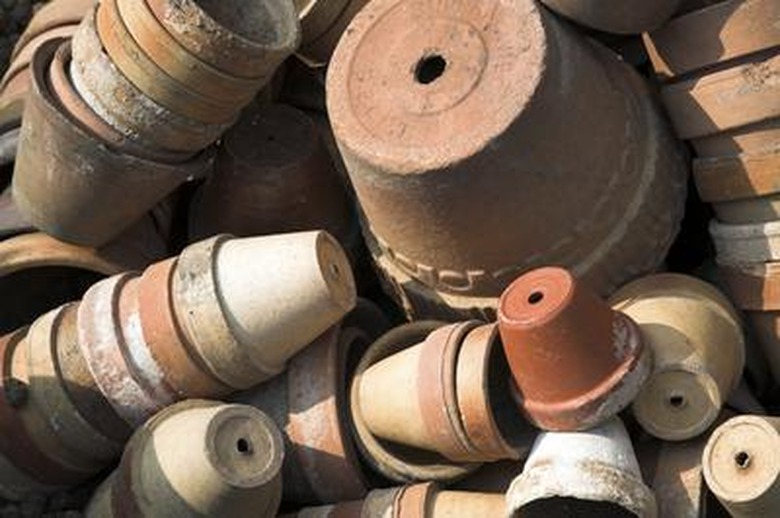Homemade Hydroponic Net Pots
Hydroponic net pots are just pots with holes in them to allow the roots access to the hydroponic nutrient solution. They can be easily made to fit any system out of whatever pots, buckets or plastic cups are available. Making homemade net pots saves money and allows the pot size to be fit to the best size for the plant and system. The net pot must fit into the hole in the top of the system and hang down into the nutrient solution. Roots will grow out through the holes in the pot and into the nutrient solution.
Step 1
Choose a suitable plastic pot, bucket or cup. For most plants a small plastic drinking cup is sufficient. Fit the pot size to the system support. It must rest on the support so that nutrients can enter the pot through the holes. How much of the pot to submerge depends on the hydroponic system used.
- Hydroponic net pots are just pots with holes in them to allow the roots access to the hydroponic nutrient solution.
- The net pot must fit into the hole in the top of the system and hang down into the nutrient solution.
Step 2
Drill holes of about 1/2-inch diameter in the bottom and sides of the cup or pot. A few larger holes is better than many small holes, so four or five is sufficient. For thin plastic cups, cut the holes with a sharp knife.
Step 3
Place the growing media in the pot and use as normal in the hydroponic system.
Make Your Own Hydroponic Net Pots
Wash a plastic container, such as a yogurt tub or plastic cup, well, using mild dish soap and warm water. Rinse well to remove all traces of soap residue. Dry the container completely. Drill a series of 1/2-inch holes on the bottom of the container, spacing them about 1/2 inch apart.
- Drill holes of about 1/2-inch diameter in the bottom and sides of the cup or pot.
Things Needed
- Plastic pot, bucket or plastic drinking cup
- Drill or sharp knife
Warning
Do not use Styrofoam cups or other buoyant materials that will float up when the nutrient solution is added. Do not use containers that have previously stored chemicals. Do not use metal containers because the metal will react with some nutrient solutions.
Tip
For vegetable growing, use food-safe containers or regular planting pots.
References
- Simply Hydroponics: The Bucket System
- YouTube: Easy to Build Hydroponics System
- University of Hawaii Cooperative Extension: A Simple Hydroponic Growing Kit for Short-term Vegetables
- Colorado State University Extension: Using Hydroponics for Food Production (p. 14)
- University of Arizona: Hydroponic Gardeners of Tucson: Six Systems That You Can Build (p. 5)
